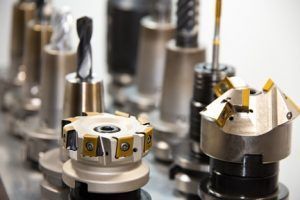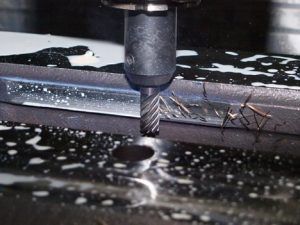CNC stands for Computer Numerical Control, and CNC machines are designed to manipulate tools in the machine shop based on the inputs from a computer program. The first of these machines were developed between the 40s and the 50s. The technology behind the machines back then relied on the now obsolete punched tape, which was a common telecommunication data storage technique. This technology was replaced by digital computer processing.

How CNC Machines Work
CNC machines rely on the instructions provided by a Computer-Aided Manufacturing (CAM) or Computer-Aided Design (CAD) file to transform a stock piece of material into a finished prototype. Through the instructions in the file, the machine will be able to cut the material according to the design specified. The automated cuts performed by the machine greatly enhance the speed and accuracy of the process in making prototypes.
Types of CNC Machines
CNC machines are often classified into two categories, namely the conventional machining technologies, as well as the contemporary machining technologies.
1. Conventional Machining Technologies
● Drills
Some of the conventional machining technologies include drilling, lathes, and milling machines. With drills, cuts are performed by spinning a drill bit and allowing it to get in contact with the base material used to create the prototype. These drilling tools can produce counterboring, countersinking, reaming, as well as tapping.
● Lathes
Drilling is very different from how lathes work because with lathes, the material is spun, and as it touches the drill bit, specific cuts are made. In some instances, the process behind this machining technique is also referred to as CNC turning. In this case, cutting operations such as boring, grooving, and facing can be performed. This process can also create linear features such as slots, threads, as well as tapers.
● Milling Machines
Aside from drills and lathes, there are also milling machines, which are considered to be the most common type of CNC machines. Milling machines have rotary cutting tools that are used to cut the base material to generate the product. Because these machines are quite popular, you will be able to find CNC turning and milling services effortlessly. All you need is to provide your CAD files to them. From there, the service will be able to generate the parts that you need based on the specifications that you have provided.
2. Contemporary Machining Technologies
Apart from conventional machining technologies, there are also contemporary machining technologies which include electrical machining that can be used in conjunction with chemical machining, as well as other cutting mediums. In terms of the former, you will be able to find electron beam machining, electromechanical machining, electrical discharge machining (EDM), photochemical machining, as well as ultrasonic machining. All these are intended to perform cuts on a piece of base material to create a part based on the design specified in the computer program file. As for the latter, other cutting mediums include laser, oxy-fuel, plasma, as well as water-jet cutting technology implemented in the machines.
Machining Process Overview
The typical CNC machining process typically involves four steps. These steps are: designing the CAD model, converting the CAD files to readable CNC instructions, CNC machine preparation, as well as the execution of the operation. Before the entire process can begin, there is a need for a product design that can be created through CAD software. More often than not, the file includes the geometries, dimensions, and other technical specifications of the final product.
After the design is created, the next step is to convert the file into a program that the machines can follow. In this case, the CAD file can be run through a CAM software to create the code that can direct the tools on how the cuts should be performed. The converted files are usually in a STEP or IGES format which is loaded into the main controller of the machine.
From there, the next step involves the preparation of the machine which includes adding the base material that is ready for machine manipulation, as well as the specific machining tools necessary. Once everything is in place, all there’s left to do is to execute the operation to create the final product.

In conclusion, CNC machining is known to have various advantages such as increased productivity and a high degree of accuracy. It also paves the way for faster project completion, as well as cost-effectiveness. Because of these advantages, more and more manufacturers prefer CNC machining processes. Perhaps this is the best time for you to consider CNC machining processes as well for your production line.











